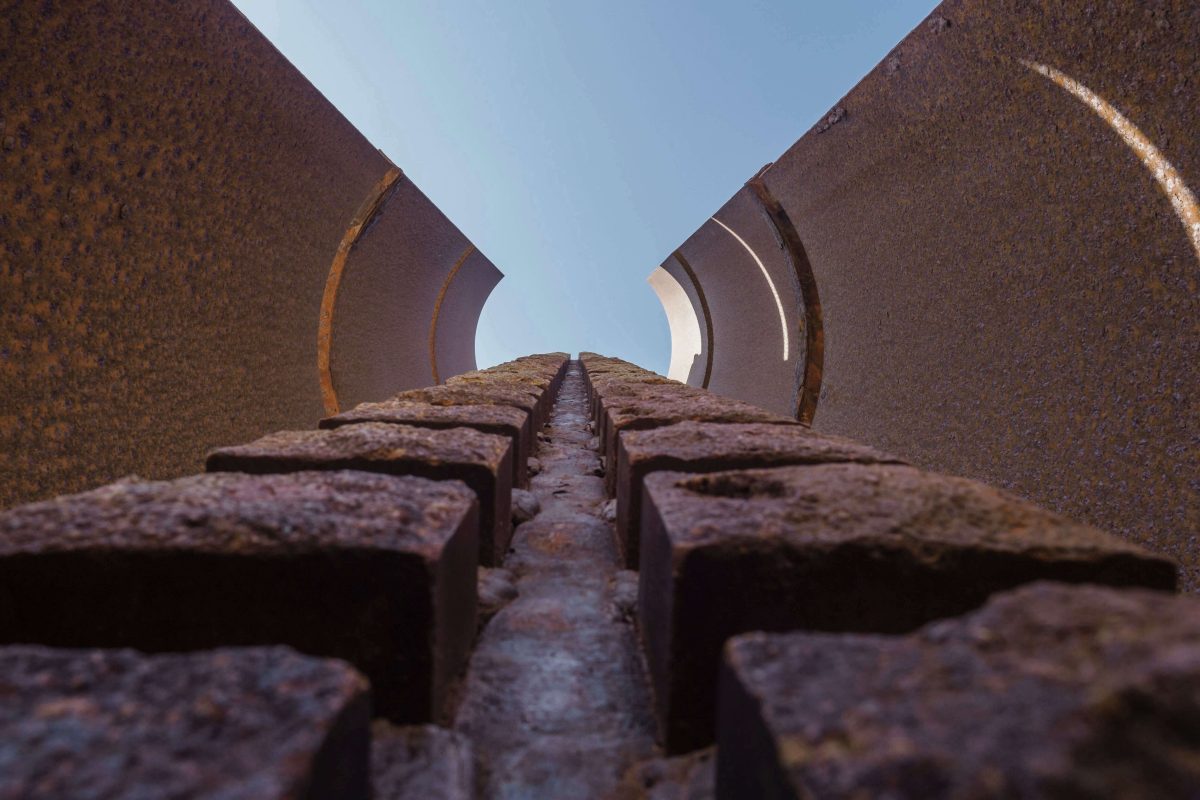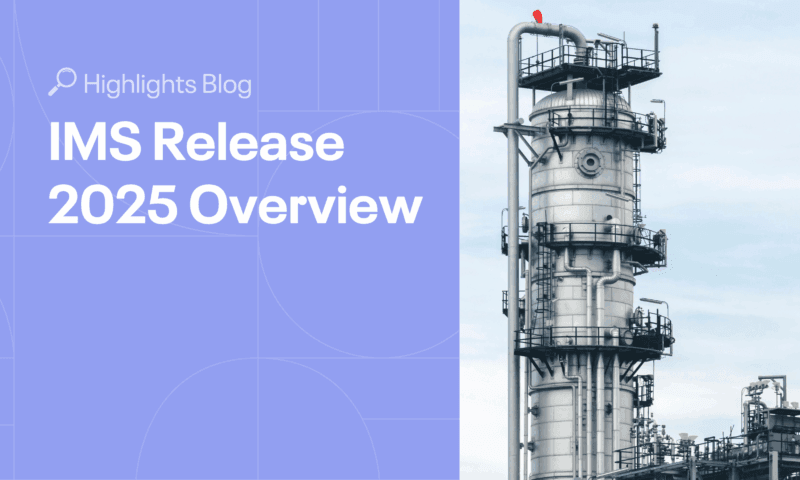Corrosion Under Insulation (CUI) is a silent and hidden enemy in industrial settings, and is of particular interest in sectors like oil and gas, petrochemicals, power generation, and pulp and paper. CUI occurs when moisture becomes trapped under insulation, leading to corrosion on metal surfaces such as pipes, tanks, and pressure vessels. Left unchecked, it can cause equipment failure, production downtime, safety hazards, and substantial repair costs.
In industries where safety is critical, the consequences of unchecked CUI are not limited to production losses; failures can also lead to serious risks to human health and the environment. According to the National Association of Corrosion Engineers (Corrosion Costs and Preventive Strategies In the United States (nace.org), the total annual cost of corrosion in the U.S. is estimated to be over $276 billion or just over 3% of US GDP. Therefore, recognizing and managing CUI is not just an operational necessity; it’s a strategic imperative that can protect both your assets and your organization’s future.
Why Managing Corrosion Under Insulation is Critical
CUI is one of the most challenging types of corrosion to manage because of its hidden nature. It forms out of sight beneath layers of insulation, making it difficult to detect until significant damage has already occurred. This corrosion can affect piping, tanks, and pressure vessels, often compromising critical equipment without any visible warning signs.
Many industries face this issue regardless of geographic location—whether it’s in freezing climates like Canada or in tropical environments. Insulation isn’t just about weather conditions; it’s about the materials and processes involved. The moisture that leads to CUI doesn’t only occur within a specific temperature range, and it can cause damage to carbon steel equipment from below freezing temperatures to temperatures above the boiling point of water. This makes it a pervasive problem across regions and industrial sectors.
How to effectively manage Corrosion Under Insulation
The key to mitigating CUI lies in adopting a comprehensive, multidisciplinary approach that involves several layers of strategy. While there are many ways to do this, here we will focus on Cenosco’s CUI Management Process. This framework goes beyond accounting for regular inspections and includes optimizing design choices, refining operational practices, and using cutting-edge technology to interface with equipment monitoring systems in near real-time. The framework goes through three stages, outlined below.

1. Design Decisions
Effective CUI prevention starts at the design phase. For example, during new installations, it’s essential to evaluate whether insulation is truly necessary. Factors such as thermal protection, freeze protection, and safety requirements must be carefully considered. If insulation is unavoidable, selecting the right materials—while considering factors like thermal conductivity, moisture permeability, and the potential for thermal cycling—is critical. This involves not only choosing insulation that can withstand environmental conditions but also ensuring that the materials are resistant to moisture and corrosion.
Ensuring proper collaboration between different engineering disciplines will play an important, on-going role in managing CUI. Process engineers should work closely with integrity and maintenance teams to determine the actual need for insulation and its implications on corrosion risks. For instance, while insulation may be needed for heat conservation, it might also introduce the risk of CUI. Engaging in this dialogue can lead to design choices that mitigate these risks, such as using alternative methods for heat retention or employing advanced coatings that reduce the risk of CUI.
For existing operations, it’s worth reassessing whether the insulation applied years ago still serves its purpose. Over time, operational conditions can change significantly. For example, modifications in processes or equipment usage may render certain insulation unnecessary. Regular audits of insulated systems are essential to identify these opportunities for optimization. By removing outdated or unneeded insulation, companies can effectively eliminate the risk of hidden corrosion and significantly reduce long-term maintenance costs.
An inventory of insulation types and their conditions is essential for effective CUI management. Many facilities struggle to identify insulated equipment and the materials used. This often leads to gaps in maintenance strategies. Comprehensive documentation of insulated components can improve inspection and repair planning. It ensures that integrity management systems remain robust and proactive.
2. Operational Strategies for Continuous Monitoring
Once insulation is in place, managing CUI requires vigilant monitoring and proactive management. Implementing a Risk-Based Inspection (RBI) strategy is essential for prioritizing inspections based on the criticality and susceptibility of equipment to CUI. By identifying high-risk areas, teams can allocate resources effectively and establish inspection intervals tailored to the operational context of each asset, enhancing asset integrity while optimizing maintenance budgets.
Inspections should include both visual assessments and intrusive evaluations of insulation condition. CUI can often be hidden and may not be evident until insulation is removed, so relying solely on external visual checks is insufficient. Thorough evaluations should be conducted to identify potential signs of moisture accumulation or corrosion, especially in areas at greater risk of water infiltration, such as equipment supports, pipe hangers, and dead legs.
Ongoing training also plays an essential role, ensuring personnel are equipped with the latest inspection techniques and technologies. A knowledgeable workforce is better prepared to identify potential CUI issues, contributing to a culture of safety and integrity that enhances long-term asset performance.
3. Regular Inspections and Proactive Maintenance
Regular inspections and proactive maintenance are essential components of effective Corrosion Under Insulation (CUI) management. Establishing a predictable inspection schedule allows organizations to detect potential issues early, helping to prevent corrosion or insulation damage before they escalate into significant problems. These inspections should be comprehensive, evaluating the condition of insulation and identifying any signs of moisture accumulation or corrosion that may compromise asset integrity.
Fostering a culture of proactive maintenance involves not just addressing immediate concerns but also planning for the long-term integrity of assets. Documenting inspection findings and implementing corrective actions based on identified issues is critical. By regularly reviewing this data and analyzing trends, organizations can optimize their maintenance strategies and ensure resources are directed to the most critical areas.
Incorporating regular inspections and a proactive maintenance philosophy significantly reduces the likelihood of CUI-related failures. This systematic approach not only safeguards asset reliability but also reinforces a commitment to operational excellence and safety within the organization.
Leveraging Technology for CUI Management
In managing Corrosion Under Insulation (CUI), technology is an essential part of improving detection and maintenance processes. While visual inspections form the foundation of equipment inspections, they should be complemented by more advanced non-destructive testing (NDT) techniques that allow inspectors to identify potential areas of water ingress without the need to remove insulation.
One example of a non-destructive testing (NDT) method is thermography. Thermography, or thermal imaging, creates images by capturing the infrared radiation emitted by equipment. This method allows the user to view variations in the temperature of an object, which can identify potential areas of moisture buildup within the insulation without damaging or removing insulation. This cost-effective and timesaving method can be useful in the early identification of areas susceptible to corrosion, providing the opportunity for timely intervention before significant damage occurs.
Aside from thermography, other NDT methods such as radiography, pulsed eddy current, and ultrasonic thickness are all valuable in a systematically planned inspection system.
By employing NDT methods, organizations can improve the accuracy of their inspections and maintain the integrity of their assets more effectively. Proactive use of technology plays a pivotal role in safeguarding assets from hidden CUI threats, reducing the likelihood of unexpected equipment failures. However, without the ability to analyze and integrate inspection data, even the most advanced testing methods can be fruitless
Making the Most of Limited Resources
A typical oil and gas facility can have tens of thousands of pieces of equipment all connected by hundreds or thousands of kilometers of pipe. Inspections can get expensive if limited resources are spent inspecting equipment that does not need to be inspected. For this reason, a risk-based approach to equipment inspections is helpful in ensuring that limited resources are applied in the most efficient way possible.
An effective and efficient CUI inspection management strategy will prioritize equipment with a higher consequence of failure and equipment exposed to conditions that increase the rate of corrosion, and it will consider upcoming turnarounds or other maintenance events to ensure that work is scheduled optimally.
In the real world, scheduled jobs often get moved around due to resource pressures and competing priorities. To take this into account, an inspection management system needs to have the ability to easily track these changes and deferrals (you can link to our previous Change and Deferral Blog).
Cenosco’s Integrity Management System (IMS) is an industry-leading tool that can address all of these requirements. With tools that allow the user to assess the criticality of equipment, to make risk-based decisions for establishing inspection intervals, to keep track of changes and deferrals, and to analyze and incorporate inspection and testing results, IMS is truly unparalleled in the world of asset integrity management software. Click here to find out more.
Maximizing ROI with a Robust CUI Management Strategy
Investing in a comprehensive CUI management strategy may seem like a high upfront cost, but the return on investment (ROI) is clear. By preventing equipment failure and avoiding unplanned downtime, companies can save millions in repairs and lost production. In fact, studies have shown that a single critical failure caused by CUI can lead to prolonged production outages, costing far more than any preventative strategy.
Real-World Example of Proactive CUI Management
One powerful example of proactive Corrosion Under Insulation (CUI) management comes from a facility in Canada. For years, the site had operated under the assumption that CUI wasn’t a major concern due to its colder climate.
After implementing IMS and running through the CUI Consequence Assessment Model to assess the consequence of failure for their major pieces of equipment, equipment never-before considered as high risk for CUI was identified for inspection. At the next inspection, based on the results of the model, they decided to remove insulation from a critical piece of equipment—a column that had been in service for many years. What they found was eye-opening.
Beneath the insulation, severe corrosion had developed over time, completely unnoticed. Despite there being no visible leaks or external signs of damage, the column was dangerously compromised. Fortunately, because they caught the issue early, the facility was able to replace the column before it failed entirely. This allowed them to avoid an unplanned shutdown, which could have led to months of costly downtime.
What’s even more impressive is the financial impact of this proactive approach. By detecting the corrosion early, they had enough time to procure a replacement column and plan the repair without disrupting operations. The savings in both time and money were so substantial that the investment in their integrity management system was justified for many years to come.
This example illustrates the importance of not assuming that insulation hides nothing of concern. With regular inspections and advanced detection methods, companies can prevent potentially catastrophic failures and keep operations running smoothly. In this case, one strategic inspection saved months of downtime and millions in lost production—a clear testament to the value of proactive CUI management.
A Continuous Process of Improvement
The fight against CUI isn’t a one-time effort; it’s a continuous cycle of improvement. As industries evolve, so do the tools, techniques, and materials available to manage corrosion. It’s important to regularly review and update CUI strategies to incorporate new technology, reassess insulation needs, and ensure that teams are well-trained in the latest inspection and maintenance practices.
Companies should promote collaboration among design, operations, and maintenance teams to prevent CUI effectively. Essentially treating CUI as a shared responsibility. This approach helps organizations build a resilient infrastructure that endures over time.
Winning the Battle Against Corrosion Under Insulation
Corrosion under insulation is a formidable challenge, but it’s one that can be effectively managed with a proactive, multidisciplinary approach. From smart design and regular monitoring to leveraging the latest technologies, companies can stay ahead of CUI and protect their assets for the long term. The key is to remain vigilant, continually reassess risks, and embrace a combination of strategies that fit the unique needs of each facility.
Request a Demo
Want to see Cenosco’s IMS in action? Fill out the form below to get started with a demo.






